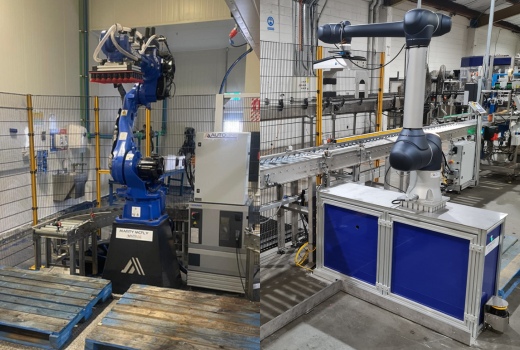Autoline recently installed an OTC Daihen Welding Robot cell into Anglo Engineering in Auckland. Check out the video on NZ Herald show casing a Human vs Robot. This demonstrates the potential of robotics in workplaces and how they can increase productivity.
NZ Herald: Man Vs Robot – How much quicker can robots really do our jobs?
Robots are here and if you’re not working with one already, chances are you will be soon and it’ll make jobs more interesting and productive.

Currently New Zealand is in a middle 27th place with 49 robots per 10,000 employees according to the International Federation of Robotics. However, other advanced nations have many more – South Korea leads the pack worldwide with 631 robots per 10,000 workers – and it’s clear that we have to follow suit and automate to remain competitive in the world.
What’s it like then, mixing robot and human workers? Auckland company Anglo Engineering’s production manager Garry Bourne said that after initial hesitation from employees, the results have been very positive for the company.
While selling robots to the employees took some effort, the reduction in the amount of fatigue-inducing manual labour they bring has been welcomed by workers.
“For instance, hand grinding for a couple of hours with heavy machines is hard work and can give people repetitive strain injuries,” Bourne said.
With robots that can work at night and in the dark when needed at a constant rate, Anglo Engineering has been able to boost productivity considerably.
And, the products are better.
“Humans can’t compete with robots when it comes to quality, and not having to grind the welds for the cosmetic reasons speeds up production and lowers material waste,” Bourne said.
One robot does the work of three experienced welders, Bourne said. At $70,000 each in annual wages, the cost of three human employees is about the same as that of a single robot.
Conversely, if Anglo Engineering had decided not to use robots, expanding to accommodate growth would have been difficult.
“The alternative we looked at was adding an afternoon shift, which meant buying more welding gear, health and safety equipment, adding parking spaces and other overheads related to staff,” Bourne said.
With robots, Anglo Engineering is positioned to take on both more complex work, or larger volumes of more mundane jobs.
Bourne added that robots enable New Zealand’s small and medium-sized businesses to compete with much larger organisations and to grow faster when needed.
“Would I recommend that organisations consider robots? Most definitely,” he concluded.
As the IFR numbers show, New Zealand has some way to go before we hit the robot-worker densities of other developed nations.
Sectors that will see increased robotic automation include primary industries such as dairy and agri/horticulture as well as forestry. These are experiencing labour shortages and the work itself is dirty and dangerous for humans who struggle to match the productivity and consistent quality of robots.
Should people worry that their jobs will go to robots? Probably not: as with the IT revolution, jobs that can be done by machines won’t be done by humans in the future. Those jobs however are repetitive and mundane, and generally not well-paid.
Robotic automation is likely to replace such jobs with more satisfying and worker-friendly positions that require better skills.
Management consultants Deloitte’s 2017 study of the impact of automation in Britain pointed to some 800,000 low-skilled jobs being lost. That however contrasts with 3.5 million new jobs being created through automation, positions that paid better as well.
Despite the fears of the machines taking over, everything points to robots using advanced technology such as networked sensors, artificial intelligence and machine learning that leverages cloud computing and will instead help create viable companies that provide the jobs of the future.





